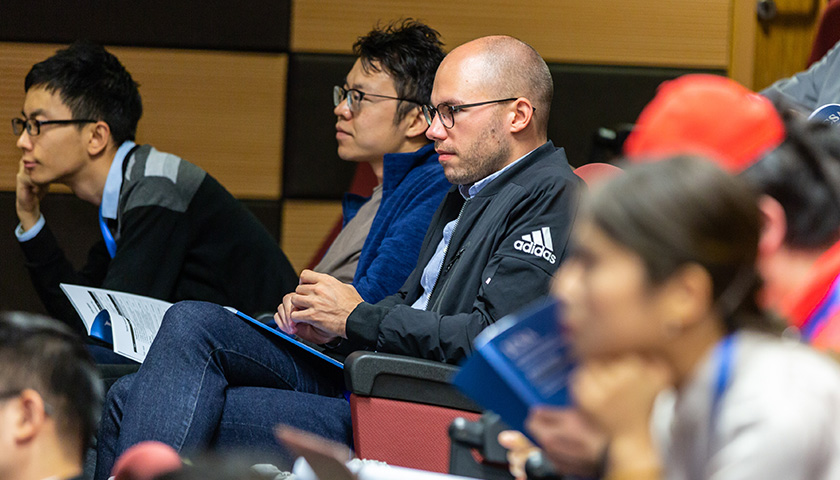by Greg Piper
Two decades ago, the Supreme Court purportedly put limits on racial preferences in college admissions: no stereotyping of minority viewpoints or policies that “unduly harm” non-minorities, plus a 25-year ticking clock to wind them down.
Not only is there “no end in sight” to race-conscious admissions with five years left, but selective colleges can’t even explain how courts would evaluate the constitutionality of their programs under the equal protection clause of the 14th Amendment, the Supreme Court ruled Thursday, casting a pall over the use of race in settings far beyond higher education.
The six right-leaning justices voted to strike down the admissions systems at Harvard and the University of North Carolina, challenged in separate lawsuits but consolidated for the high court’s review. Justices Clarence Thomas, Brett Kavanaugh and Neil Gorsuch also wrote concurrences.
Oral arguments last fall predicted the right-left ideological lineup, with Thomas, who is black, complaining “I don’t have a clue” what the talismanic word “diversity” means.
The challenged programs “lack sufficiently focused and measurable objectives warranting the use of race, unavoidably employ race in a negative manner, involve racial stereotyping, and lack meaningful end points,” according to the majority opinion by Chief Justice John Roberts.
BREAKING! We won! The US Supreme Court rules in favor of equality, the American Dream and Asian American students and families! The justices rule for Students for Fair Admissions in its landmark cases against Harvard University and University of North Carolina Chapel Hill! This… pic.twitter.com/WBlwWU46x4
— Asra Nomani • Defeating the #WokeArmy (@AsraNomani) June 29, 2023
It emphasizes, however, that universities can still consider “an applicant’s discussion of how race affected the applicant’s life” if it’s “concretely tied to a quality of character or unique ability that the particular applicant can contribute to the university.”
What exactly that means will likely play out in litigation as colleges throw admissions spaghetti against the wall to see what sticks.
University of Chicago law professor Will Baude speculated that “eliminating standardized testing requirements, or giving preferences on the basis of geography, where the purpose of these things is to achieve a certain racial outcome,” would come before the court “in the next decade.”
As for how to stop schools from “cheat[ing],” Baude said federal legal discovery and enforcement by the departments of Justice and Education “under some administrations” are possibilities.
“Higher-education grandees … will not go quickly into the colorblind night of merit-based admissions, but will fight for workarounds to maintain their system of racial spoils,” according to Ilya Shapiro, director of constitutional studies at the Manhattan Institute.
Do No Harm, an advocacy group focused on the politicization of medicine, said it wouldn’t hesitate to sue medical schools that “resist these rulings and continue to racially discriminate” against whites and Asians.
The Supreme Court gave universities a narrow opening, and Harvard just announced it’s going to drive an affirmative action truck right through it. https://t.co/Icj8ubIcpn pic.twitter.com/jBD2qCcRHt
— William A. Jacobson (@wajacobson) June 29, 2023
5. So there’ll be more litigation, but it’s clear that the Supreme Court has no more constitutional patience for admissions officers’ social engineering or university administrators’ DEI posturing.
For more, watch @ManhattanInst panel I'm leading at noon:https://t.co/ACvwOElJcT
— Ilya Shapiro (@ishapiro) June 29, 2023
Harvard’s policy in particular was slammed for the across-the-board lower “personal ratings” that Asian-American applicants received. After President Biden’s election, Asian-American activists predicted SCOTUS would pick up where the Trump administration’s legal challenges ended.
According to the SCOTUS majority, “race is a determinative tip for “a significant percentage” of all admitted African American and Hispanic applicants” in Harvard’s admissions process. It’s considered by “first readers” and again by the full admissions committee, whose director said the goal is preventing a “dramatic drop-off” in year-to-year minority admissions.
In the UNC admissions system, initial readers are “required” to consider race and may provide “a substantial ‘plus'” for preferred races, which are then considered by the race-conscious “school group review.”
These systems are like the “state-mandated segregation” that remained “a regrettable norm” in much of the country for a century after the 14th Amendment’s ratification, the majority says. But Brown v. Board of Education and cases that followed it confirmed that “[e]liminating racial discrimination means eliminating all of it.”
Justifications such as “promoting a robust marketplace of ideas” are too vague, and the racial categories are “plainly overbroad” for Asians, “arbitrary or undefined” for Hispanic and “under-inclusive” for Middle Eastern students.
“The universities’ main response to these criticisms is ‘trust us'” but they haven’t provided “an exceedingly persuasive justification for separating students on the basis of race that is measurable and concrete enough to permit judicial review,” the majority said.
Harvard and UNC failed to convince the right-leaning justices that “race is never a negative factor” in their programs. The court record found Harvard’s policy resulted in fewer Asian-American admissions “and a benefit provided to some applicants but not to others necessarily advantages the former at the expense of the latter.”
The programs also “require stereotyping” in direct contradiction to the 2003 Grutter ruling that upheld a limited version of affirmative action, and differ little from the “outright racial balancing” the court prohibited in the decade-old Fisher ruling that further limited Grutter.
While claiming their race-conscious admissions will end “once meaningful representation and diversity are achieved,” Harvard and UNC simply compare “the racial breakdown of the incoming class” to another metric “to see whether some proportional goal has been reached,” the majority said.
“It sees the universities’ admissions policies for what they are: rudderless, race-based preferences…Those policies fly in the face of our colorblind Constitution and our Nation’s equality ideal. In short, they are plainly—and boldly—unconstitutional."
-Justice Clarence Thomas pic.twitter.com/IpFxWDDBLI
— GOP (@GOP) June 29, 2023
In a 57-page concurrence, Thomas laid out an “originalist defense of the colorblind Constitution” and explained why Grutter was wrongly decided over his objections and “all forms of discrimination based on race” are both unconstitutional and have “pernicious effects.”
“While I am painfully aware of the social and economic ravages which have befallen my race and all who suffer discrimination, I hold out enduring hope that this country will live up to its principles … that all men are created equal, are equal citizens, and must be treated equally before the law,” he concluded.
Gorsuch’s concurrence, joined by Thomas, explained why the plain language of Title VI of the Civil Rights Act of 1964 also prohibits the challenged programs: “They elect to receive millions of dollars of federal assistance annually” and “the trial records reveal that both schools routinely discriminate on the basis of race when choosing new students.”
Justice Clarence Thomas blasts Justice Ketanji Brown Jackson's arguments in his concurrence:
KBJ "locks blacks into a seemingly perpetual inferior caste. Such a view is irrational; it is an insult to individual achievement and cancerous to young minds seeking to push through… pic.twitter.com/c3fUQPWETP
— Steve Guest (@SteveGuest) June 29, 2023
The ruling could pose a mortal threat to the diversity, equity and inclusion industry in corporate America as well, lawyers who specialize in corporate governance told New York Post business columnist Charles Gasparino.
George Washington University law professor John Banzhaf predicted the ruling could additionally threaten demands for African-American reparations, the subject of a $14 trillion bill introduced in May by Rep. Cori Bush (D-Mo.) that would cost several times the estimated price tag of the 20-year U.S. war in Afghanistan.
“We were told a lie that discrimination was necessary during admissions processes because it would lead to the overall improvement of our college campuses,” Speech First, which sues universities that allegedly chill speech, said in a statement. “Instead, these policies have degraded the quality of education by eliminating the robust exchange of ideas necessary for serious scholarship.”
“This decision offers a wonderful opportunity to adopt an all-of-society focus on family formation and other background variables that produce disparities,” Heritage Foundation fellows said in a statement.
– – –
Greg Piper has covered law and policy for nearly two decades, with a focus on tech companies, civil liberties and higher education.
Photo “College Students” by ICSA.









Lots of hullabaloo from a Supreme Court that for two and half centuries has helped racial profiteering Democrats enforce their bigot vote buying, tax payer funded racist color judgments as the national standard for inclusion into, exclusion from every single opportunity in America…and still is, with the Court’s wizard words requiring university consideration of historical details that include everything except a candidate’s personal history of academic competence or incompetence.
C students with politically favored appearances will still be accepted over A students without them, just as Bollinger vs Grutter mandated,( to the delight of the bigots, mainlining Columbia U’s stereotype-indoctrinated racists into social credibility and political power. )
Politically enforced, socially acceptable racial favoritism will never end because politically promised and enforced racial favoritism is the fastest, easiest way to political power, as the segregated south, Nazi Germany and the Obama/Biden admin proved.
Scammers find it difficult to break their habits.